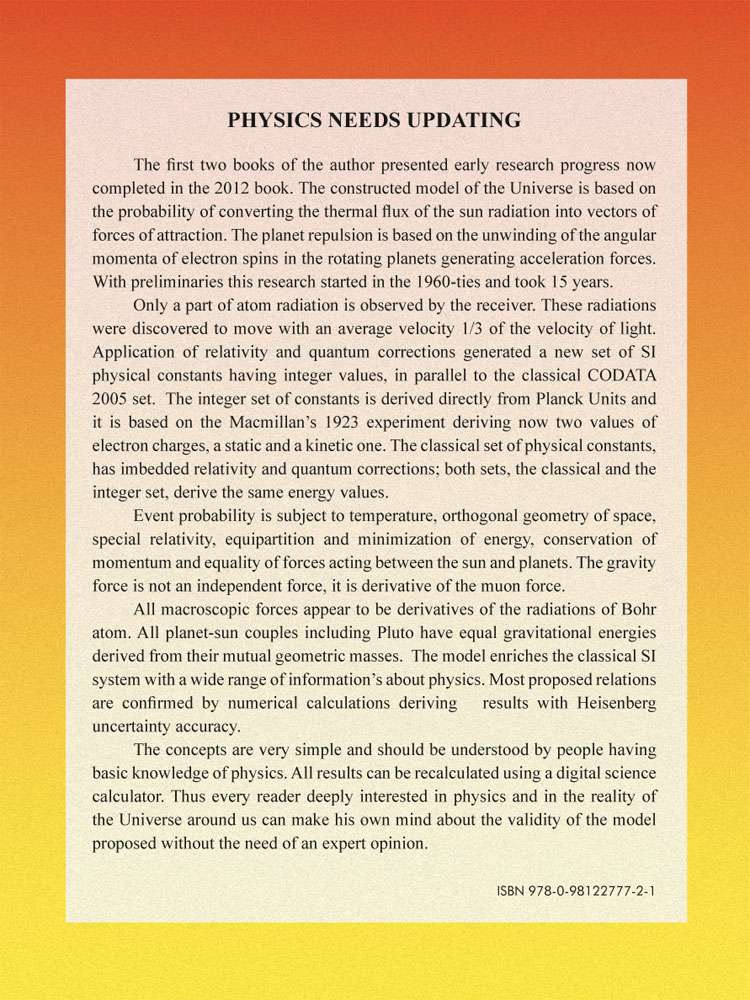The first two books of the author presented early research progress now completed in the 2012 book. The constructed model of the Universe is based on the probability of converting the thermal flux of the sun radiation into vectors of forces of attraction. The planet repulsion is based on the unwinding of the angular momenta of electron spins in the rotating planets generating acceleration forces. With preliminaries this research started in the 1960s and took 15 years.
Only a part of atom radiation is observed by the receiver. These radiations were discovered to move with an average velocity 1/3 of the velocity of light. Application of relativity and quantum corrections generated a new set of SI physical constants having integer values, in parallel to the classical CODATA 2005 set. The integer set of constants is derived directly from Planck Units and it is based on the Macmillans 1923 experiment deriving now two values of electron charges, a static and a kinetic one. The classical set of physical constants, has imbedded relativity and quantum corrections; both sets, the classical and the integer set, derive the same energy values.
Event probability is subject to temperature, orthogonal geometry of space, special relativity, equipartition and minimization of energy, conservation of momentum and equality of forces acting between the sun and planets. The gravity force is not an independent force, it is derivative of the muon force.
All macroscopic forces appear to be derivatives of the radiations of Bohr atom. All planet-sun couples including Pluto have equal gravitational energies derived from their mutual geometric masses. The model enriches the classical SI system with a wide range of informations about physics. Most proposed relations are confirmed by numerical calculations deriving results with Heisenberg uncertainty accuracy.
The concepts are very simple and should be understood by people having basic knowledge of physics. All results can be recalculated using a digital science calculator. Thus every reader deeply interested in physics and in the reality of the Universe around us can make his own mind about the validity of the model proposed without the need of an expert opinion.
Probabilistic Digital World of Physics and Secrets of Gravitation
By: S. M. Zoledziowski$45.00
Only 2 left in stock (can be backordered)
| Weight | 400 g |
|---|---|
| Dimensions | 9.25 × 7.13 × 0.4 in |
| Pages | 226 |
Leave your review















